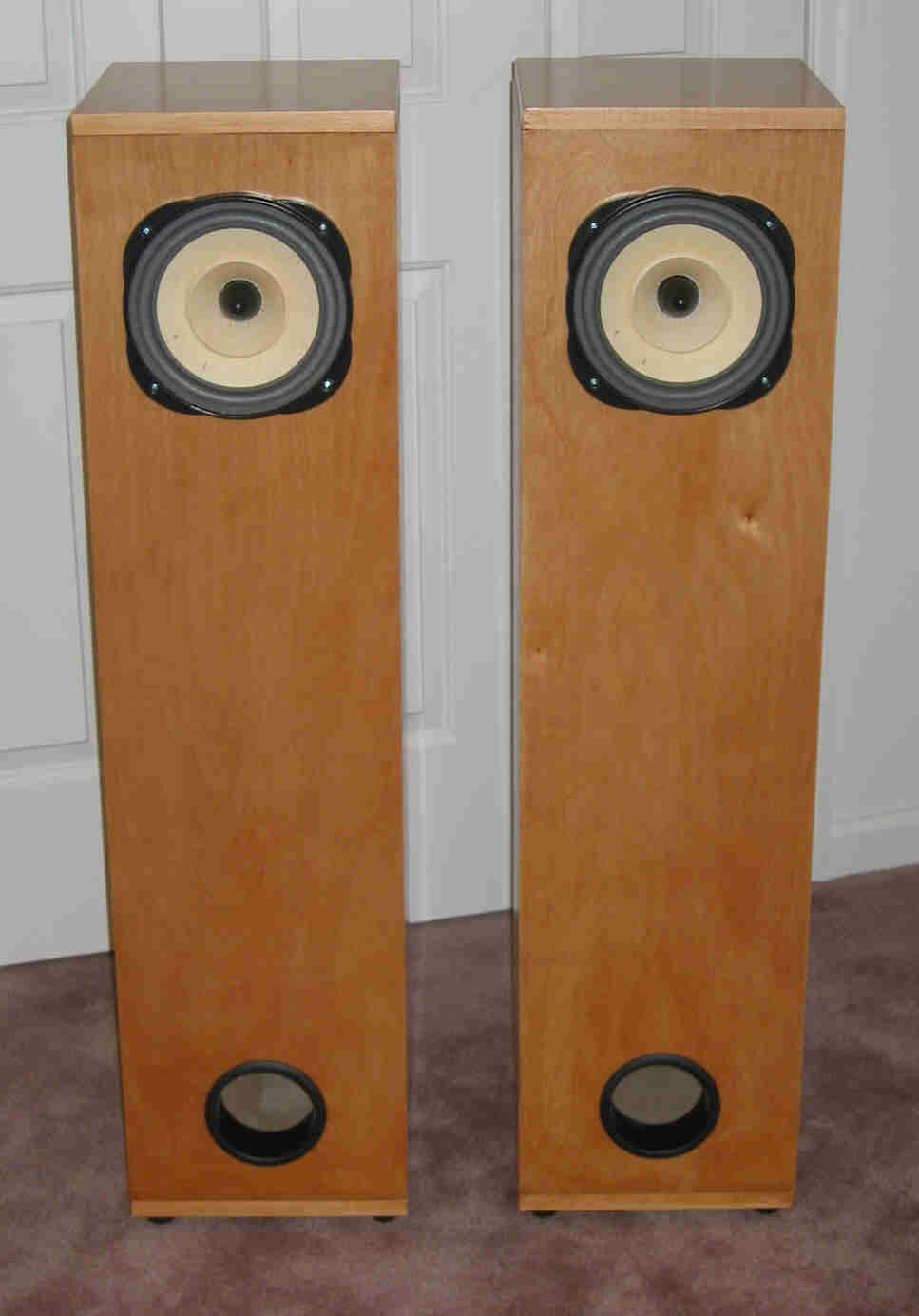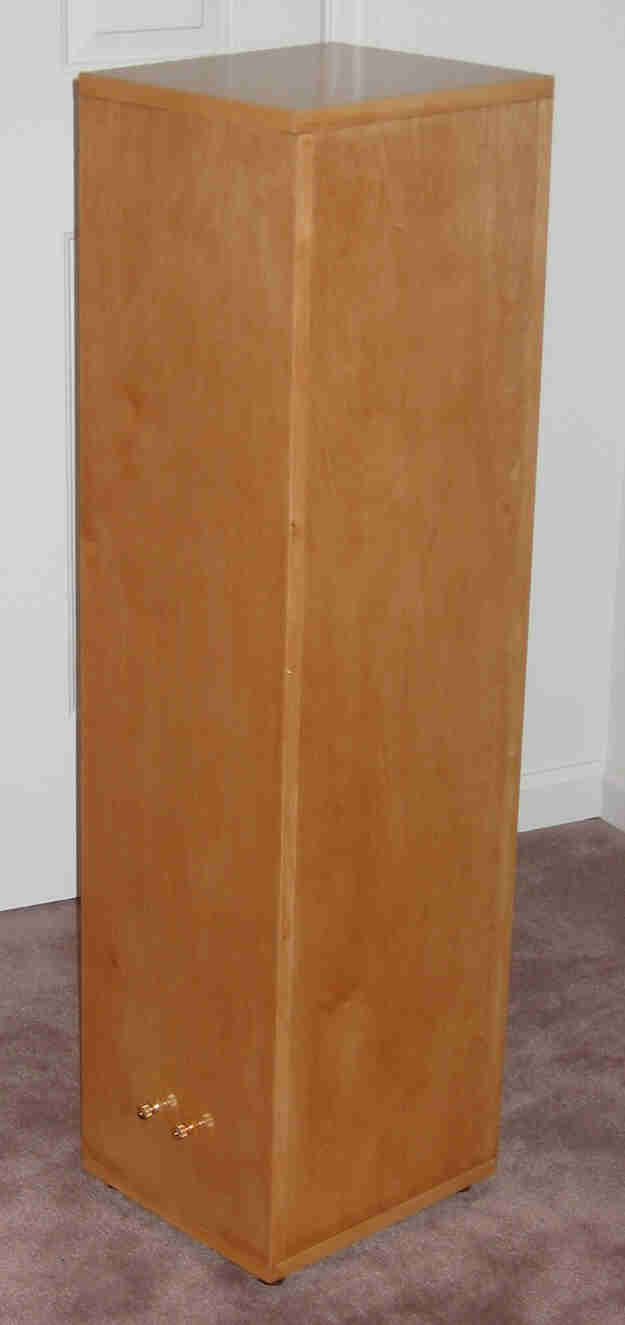

If you have read this far, or maybe you just jumped right to this section, you probably want to hear what I think of the Lowther DX series of drivers. I'll be honest, after my initial measurements showed minimal differences, between the drivers SPL responses, I fully expected the DX drivers to all sound about the same. The measured SPL frequency response curves were very similar and there weren't any obvious trends that would lead me to conclude that one driver had more potential then any of the others. Well I have been listening to the various DX drivers for the last couple of weeks and there are significant audible differences.
I started with the DX2 drivers and was immediately impressed by the efficiency. The volume knob was set much lower then normal and the music was still louder then the volume at which I usually like to listen. The enclosures were set-up in my listening room angled in slightly so I was listening aff axis at probably about a 15 degree angle. This speaker positioning seemed to produce the best balanced response in my room. The music selections I played were almost all acoustic instruments and vocals with main stream jazz making up the majority of the selections. I did listen to some classical, both large and small ensembles, and a few older rock standards.
I have read all of the claims about greater detail and clarity produced by Lowther drivers and without trying to sound like a salesman, I have to admit that I was shocked at the results I heard. It felt like a curtain between me and the music had been lifted. Everything sounded clearer, crisper, and more alive. I am not sure if this is the result of the frequency response hump between 6 and 12 kHz or not. The music sounds great and I have not grown tired of the sound one bit. Good recordings still sound balanced while the added clarity and presence has really improved the reproduction of older jazz recordings. Imaging is very good as one would expect from a full range driver. Bass performance, while not subwoofer strength, is more than adequate for the acoustic music I enjoy.
I experimented with the different resistors and the DX2 drivers and finally settled on the 10 ohm value as sounding the best. So after several days of listening, I swapped the DX2 drivers for the DX4 drivers. What a difference! This was the biggest surprise, the DX4 drivers sounded even more detailed and cleaner while still exhibiting better bass performance. Again, I swapped resistors until I settled on the 12.5 ohm value as sounding the best. What about the DX3 drivers, where do they fit? The difference between the DX3 and the DX2 drivers is not as big as the step up to the DX4 driver. The DX3 sounds fuller then the DX2 by a small amount. Swapping the resistors took me back to the 10 ohm value sounding the best in my set-up. Today, the DX3 drivers are resident in the ML TL enclosures and I have been very happy with them for the past couple of weeks. I have other plans for the Lowther DX4 drivers but that is another project that I will discuss at some time in the future.
On a rainy Saturday a few weeks ago, I set out to compare the Lowther speakers with the other systems I had built over the past couple of years. I started by returning to the DX2 drivers in the Lowther ML TL enclosures. My plan was to start at the bottom of the Lowther line and see where the other speakers, in particular the two Fostex systems, stacked up.
I ran a somewhat qualitative test by setting my preamp to mono and connecting one speaker from each pair to the left or right channel starting with the Fostex FE-208 Sigma ML TL system. The Lowther DX2 was on the right and the Fostex FE-208 Sigma was on the left. I switched them later to make sure that any room effects were not factored into my observations. I had my assistant (11 year old son) sweep the balance control between the left and right channel in an attempt to get a one for one comparison. Granted this was not a very scientific test but it did highlight the major differences, and more important we also had a lot of fun. I listened for a while, directing my assistant to sweep back and forth at key moments, and I wrote down my impressions.
After a while my assistant wanted a turn listening so we switched positions. We again went through the different tracks I was using, I swept back and forth between the Lowther DX2 and the Fostex FE-208 Sigma, and then I asked for his opinions. My son thought for a while and then pointed at the Fostex FE-208 Sigma and commented that it sounded dull. No prompting, just his honest opinion. It also matched my impressions. The Lowther DX2 had a much more detailed and cleaner sound, and as I already stated above it really felt like a curtain between the listener and the performer had been removed. The Fostex FE-208 Sigma sounded somewhat muffled with a rolled off high end. The difference in the bass performance between the two ML TL systems was minimal.
We repeated this test with my Fostex FE-164 ML TQWT speaker system and my Focal two way TL speaker system. The results came out pretty much the same. The only speaker that really came close was the Focal TL. But the Lowther DX2 still sounded more open and revealing. I never had to reach for one of the more expensive DX series drivers to out perform my older quarter wavelength projects.
The Lowther DX series of drivers significantly exceeded my wildest expectations and continue to surprise me with their performance. These drivers are definitely full range with no help needed with the high frequencies. However, with the DX series of drivers you get what you pay for. The more expensive DX drivers out perform the less expensive ones. This is not meant to indicate that the Lowther DX2 driver is a poor performer. In my opinion it is still significantly better then the two Fostex drivers I have used in the past. The DX2 driver would make an excellent entry level Lowther project, using my ML TL design, with the option of later upgrading to one of the more expensive DX drivers.
As for the top of the line DX4 driver, I have to admit I do not fully understand why the performance of the DX4 driver is so much better then the other two DX drivers when my measurements would indicate minimal differences exist. That is a question to be considered later as I spend more time working with these drivers. One of the other areas deserving further investigation is the impact of the various phase plugs. So I have more work to do with the Lowther DX drivers and I will be adding to these pages as more interesting results become available.
I also think that some of the other Lowther drivers would be good candidates for this style of enclosure design with the appropriate correction filters in place. I believe that the PM6A, PM2A, PM6C, and PM2C would also work well in a ML TL style enclosure. Based on this experience, I'd like to continue to work with Lowther drivers and building more projects.
I would like to thank Jon Ver Halen of Lowther-America for his help in selecting the Lowther DX series of drivers and for his support during this project. If you are considering building this project, I would appreciate it if you contacted Jon and seriously consider buying the drivers from him. If you do contact Jon, please let him know that you are thinking of building this project so that the level of interest in this compact and somewhat non-traditional Lowther design can be recognized.
